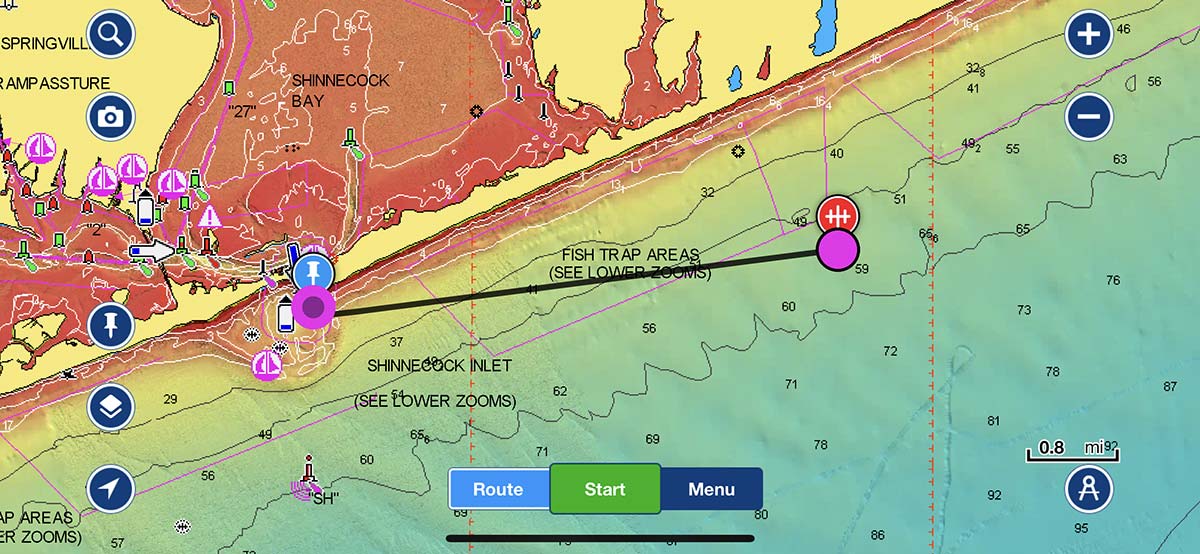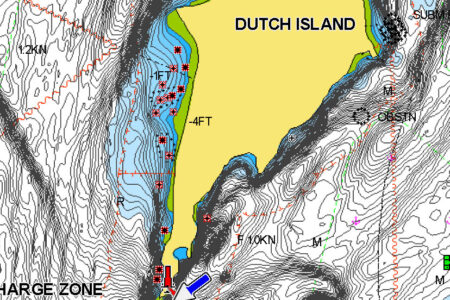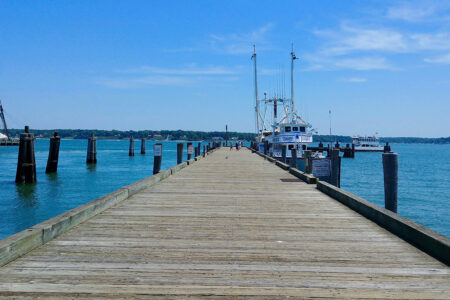
On Wednesday, August 24, 1893, the 110-foot iron built tugboat the Panther met her fate six miles southeast of Shinnecock Bay as she was towing the barge Lykens Valley with a total of 20 crewmen from both vessels. The tugboat and barge were hit with a category two hurricane with waves so severe, the captain of the Panther had to cut loose the Lykens Valley which ended up washing ashore while the Panther took a bad beating and has been resting in 55-feet of water southeast of Shinnecock Inlet ever since. Out of the 20 crewmen, three made it ashore and survived, while the 17 others were lost at sea. Today, the 153 year old tugboat the Panther (N40 50 713/ W 72 23 417) remains in solid form due to being built mainly of iron.
She is loaded with anemone growth and provides a home for myriad forms of marine life. Aside from the usual array of wreck-dwelling species such as blackfish, sea bass, porgies, pollock, fluke, flounder, bergalls and red hake, striped bass, and even cod have been taken here in season. Along with these gamesters and groundfish, lobsters and other crustaceans make their homes in and around where the hull meets the sand. All in all, this is an excellent fish-holding wreck.
The action starts as early as late April with red hake (ling) blackfish and a few sea bass. May and June sees a variety of life including fluke, mackerel, bluefish at times and the start of big porgies. July through September is a pot luck as just about anything goes on, especially fluke and sea bass, with a slew of southern visitors just passing through. October and November are the usual mix bag of sea bass, porgies and blackfish. Throughout the course of the summer and fall, this wreck has seen all kinds of exotic and pelagic life. Therefore, I suggest being ready by having spinning and conventional gear with Epoxy Jigs, Bass Assassin plastics and leadheads as well as tins, bucktails and a variety of Gulp baits.
Aside from artificial lures, fresh clams and squid will take care of most of the groundfish while Spro Bucktails of the appropriate weight to hold bottom, tipped with spearing, and fish strips (mackerel, bluefish and especially fresh sea robin) will catch many of the other species in residence. This combo has put many big fluke over 8 pounds on my deck over the years.
For the upcoming month of November, being that the piece sits in 55-feet of water, it makes it prime grounds for togging. Big tog will find refuge in the nooks and crannies of the old tug’s iron, along with probing its structure for their next meal. A favorite rig of mine is so simple and effective for fishing this sticky piece. It consists of a sinker loop at the bottom and a single dropper loop about a foot above it with a 3/0 or 4/0 Gamakatsu Octopus hook fixed to it. This rig allows for the least amount of hang-ups and more fish caught. You could also try a jig on the piece from 1 to 3 ounces, depending on the tide for a different presentation.
Green crabs will see a lot of play from the tog here and are readily available. As the water gets a little colder, you could give white leggers a shot on this piece for potentially a bigger ‘white chin.’ I advise stout spinning tackle here for bullying those bullies out of the wreck. Forty-pound braid with an 8-foot length of 60-pound leader gets the nod from me.
Don’t overlook this 110-foot tog paradise this fall for the possibility at a banner day out on the eastern end piece.




